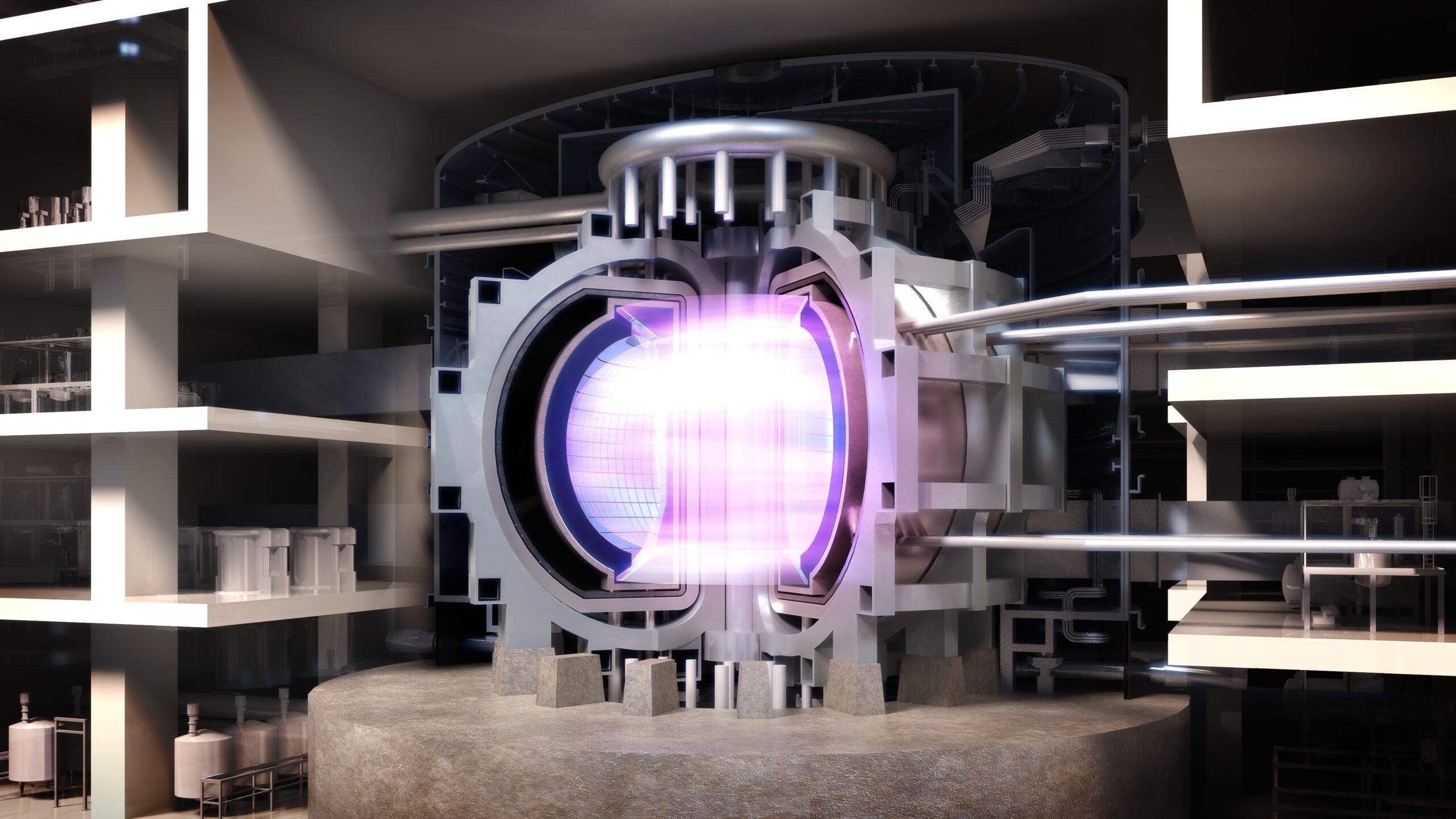What Will a Fusion Power Plant Look Like?

The U.S. Department of Energy (DOE) announced on Dec. 13 the achievement of fusion ignition." The milestone is a major scientific breakthrough, decades in the making. Fusion, of course, is the process by which two light nuclei combine to form a single heavier nucleus, releasing a large amount of energy. We've all seen it in action-it's what powers the sun.
The energy produced during the DOE experiment was not enormous. A total of 2.05 megajoules (MJ) of energy was delivered to the target assembly, resulting in 3.15 MJ of fusion energy output. In terms people might be more familiar with, that's a net output of 0.3056 kWh. I have a small portable generator in my garage that produces more than that. Nonetheless, this first-of-a-kind achievement is a remarkable step forward for fusion power.
General Atomics (GA), a San Diego, California-based developer of advanced technology solutions for government and commercial applications, is a leader in the quest to harness fusion energy. To better understand what this achievement means, what a fusion power plant might look like, and what still needs to be done to bring fusion power online, I spoke with Wayne Solomon, vice president for Magnetic Fusion Energy with GA's Energy Group, and Brian Grierson, GA's Fusion Pilot Plant hub director. Both men were extremely excited about the announcement.
From my perspective, what it really speaks to is the value of investing in the science," Solomon said, because that's what really moves the ball forward on these types of things."
Electricity from FusionGA's concept of an operating fusion power plant uses magnetic confinement and looks very similar to existing thermal units in service today that use heat to produce electricity. This has the benefit of using some of the technologies that have already been developed by the power industry for other power producing systems that generate electricity," explained Grierson, and it has the ability to reuse a lot of the infrastructure that already exists." In fact, much of the equipment at decommissioned power plants could be repurposed.
There are fusion developers working on other power generating concepts, however. A key difference between GA's fusion system and some of the others is that GA's, which uses deuterium and tritium as fuel, also uses a unique design for a blanket" to breed the fusion fuel-it makes its own tritium-which is what makes the plant self-sufficient. By using a fusion blanket that surrounds what we call the fusion power core, you get both the heat that comes out from the fusion process, as well as production of the fuel that then gets recirculated and makes the plant self-sufficient. So, you combine that with a power cycle, like a conventional Rankine cycle or a Brayton cycle, then electricity is produced," said Grierson.
Some new systems are required too. Our fusion plant uses superconducting magnets that confine and control the fusion plasma," said Grierson. The superconducting magnets have to be maintained at very low temperatures, which requires a cryogenic system.
Other supporting systems that are unique include the vacuum and exhaust processing system. Deuterium and tritium are gases. In the fuel cycle, the gases are injected into the plasma core. After the fusion process occurs, byproducts, such as helium and unburned fuel, are recovered. Those need to be reprocessed. The fusion occurs under a vacuum," Grierson explained. That's a safety benefit, as any leak would immediately stop the fusion process. But in order to optimize the fuel mixture, and control the power production, we rely on specialized pumps and vacuum systems," he said.
Overcoming ChallengesThere are still hurdles to overcome concerning the fuel cycle. While deuterium is easily extracted from water, tritium is relatively scarce. One of the biggest challenges for the fusion system is to produce enough tritium to fuel the fusion plant," Grierson said. However, GA recently published a paper on a new breeding blanket concept that Grierson believes has potential. Among the benefits is that it uses silicon carbide-based materials, which provide strength at high temperature and reduces the size of the physical structure. This maximizes the space used for the breeder, which increases the production of tritium. The GA blanket also offers a side benefit. You may be able to take advantage of more efficient high temperature thermodynamic cycles," Solomon said.
Another challenge involves dealing with the intense heat and particle flows that occur in the fusion process. There are several pieces to that puzzle. How do you design the right kind of dissipation system to deal with that? What are the right materials that can withstand the environment without back contaminating the fusion process?" Solomon asked, noting that scientists know a lot about the material properties needed to deal with the heat, but some of those materials find their way into the fusion core, and that can reduce the confinement or the amount of fusion production. So, you really want to optimize that balance," he said.
There are a whole range of other relatively minor" challenges, according to Solomon, which could mean we don't see an actual plant in operation before the 2030s, but that's still a pretty exciting prospect from my point of view. In the meantime, both men are eagerly anticipating achieving net energy gain-like last year's ignition-from a fusion pilot plant that uses the magnetic confinement approach. Both cite advancements in technology and completion of the ITER project in France as the next big announcements in fusion.
The completion of ITER construction and the achievement of first plasma is going to be a major celebration. It's an enormous international endeavor and that'll be a crowning achievement that the fusion community has been eagerly anticipating for some time," Grierson said.
I think it's clear from our side that we believe fusion to generate electricity is going to transform the world with abundant clean energy," concluded Solomon.
-Aaron Larson is POWER's executive editor.
The post What Will a Fusion Power Plant Look Like? appeared first on POWER Magazine.